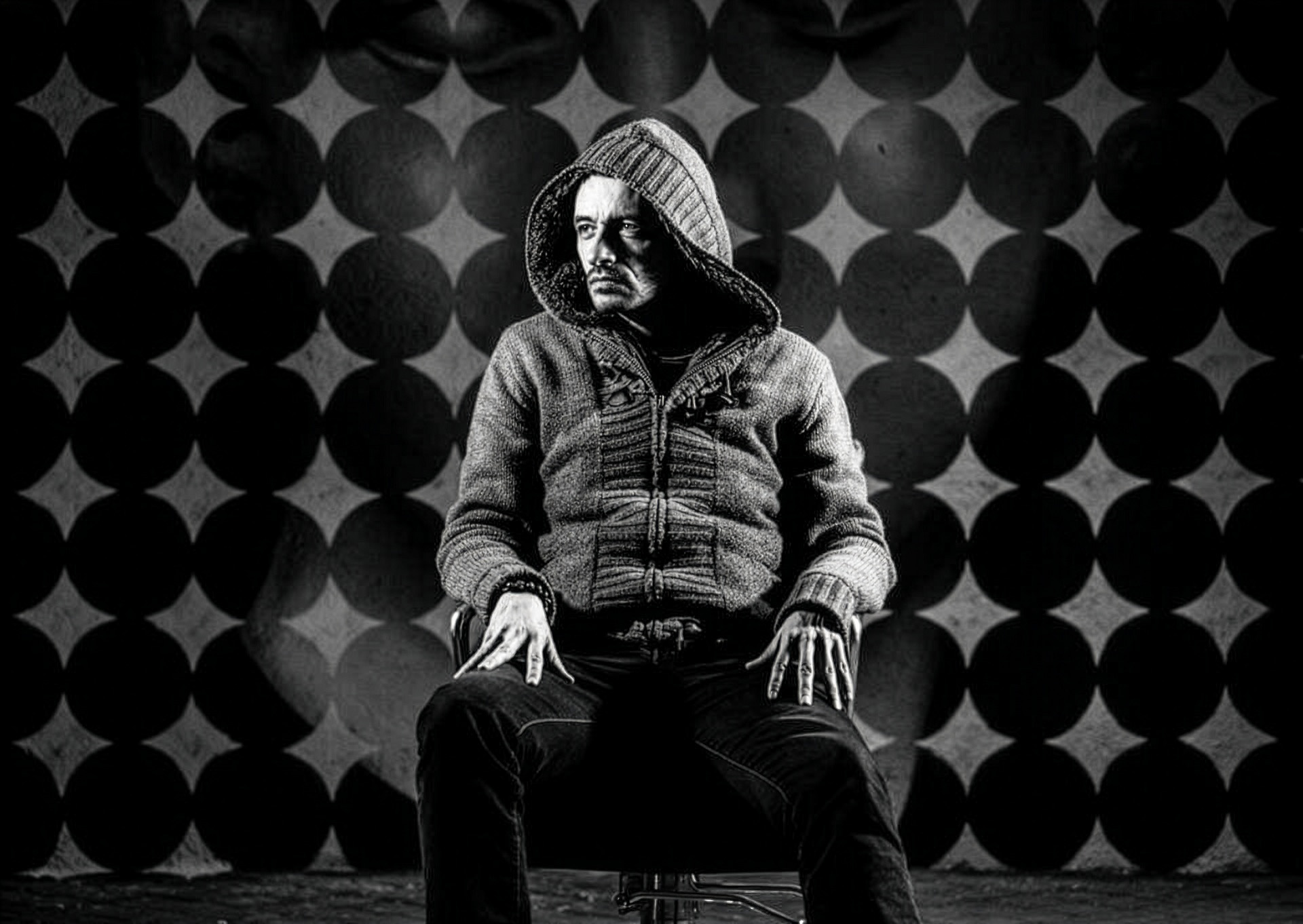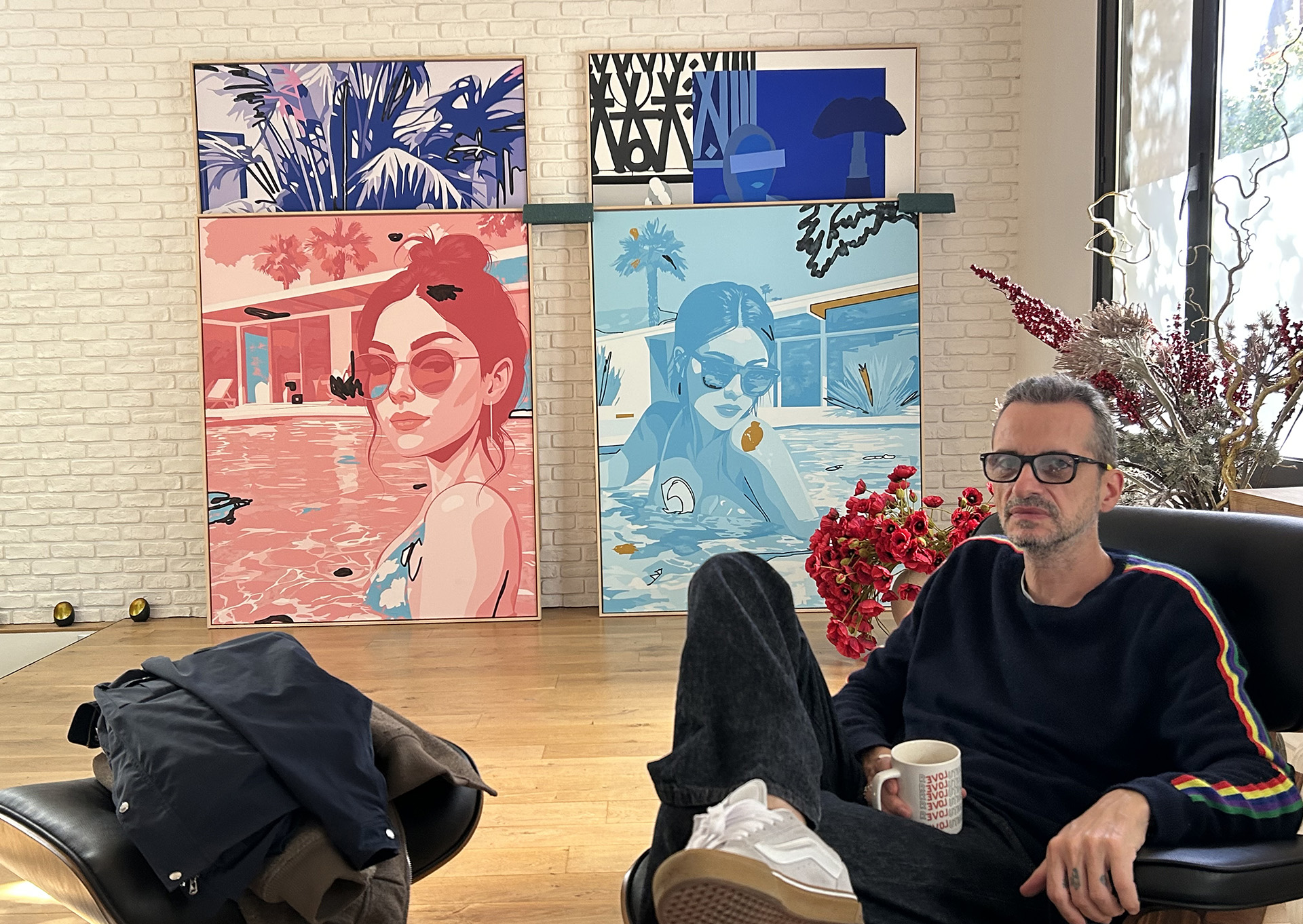FenX


Loïc Le Floc’h, also known as Fenx, is a visual artist born in the mid-1970s and based in Paris.
His work unfolds as an intimate narrative, shaped by the echoes of his emotional, cultural and iconographic past. Emerging from the subcultures in which he actively took part, Fenx has forged a personal aesthetic where memory, precision and spontaneity converge.
Advocating a return to beauty combined with a reflection on the accuracy of gesture, he creates refined compositions, stripped of the superfluous, inviting the viewer’s gaze to complete what is left unsaid.
His initial interest in flat painting and vector-based imagery arose at a time marked by the rise of digital technology and computer graphics software. It was the painting of his generation — one rooted in the language of computing, where data reduction and formal simplification defined a new aesthetic born of technology. This period shaped his sense of structure, clarity and color, foundations that continue to inform his artistic practice today.
Over time, Fenx gradually moved away from this approach toward a more gestural and organic language, where matter, spontaneity and accident engage in dialogue with the precision of drawing and the balance of flat color fields. This tension between control and freedom gives rise to a body of work that is immediately recognizable, unified by meaningful chromatic harmonies and a constant equilibrium between form and content. Fenx pursues a subtle balance between control and chaos, figuration and abstraction, construction and spontaneity — a pictorial dialogue that imbues his work with an almost musical tension, both mastered and vibrant.
The female figure occupies a central place in his practice.
She embodies both an appeal to the other and a fascination with beauty, expressing a poetic attraction imbued with elegance and restraint. Fenx’s nudes are neither voyeuristic nor idealized; they reveal a sensitive exploration of alterity, where sensuality remains suggested rather than imposed.
His recent works revisit a dreamed-up America — one shaped by the images, music and mythologies of his youth — transformed into an inner landscape where memory, imagination and emotion converge.
His work unfolds as an intimate narrative, shaped by the echoes of his emotional, cultural and iconographic past. Emerging from the subcultures in which he actively took part, Fenx has forged a personal aesthetic where memory, precision and spontaneity converge.
Advocating a return to beauty combined with a reflection on the accuracy of gesture, he creates refined compositions, stripped of the superfluous, inviting the viewer’s gaze to complete what is left unsaid.
His initial interest in flat painting and vector-based imagery arose at a time marked by the rise of digital technology and computer graphics software. It was the painting of his generation — one rooted in the language of computing, where data reduction and formal simplification defined a new aesthetic born of technology. This period shaped his sense of structure, clarity and color, foundations that continue to inform his artistic practice today.
Over time, Fenx gradually moved away from this approach toward a more gestural and organic language, where matter, spontaneity and accident engage in dialogue with the precision of drawing and the balance of flat color fields. This tension between control and freedom gives rise to a body of work that is immediately recognizable, unified by meaningful chromatic harmonies and a constant equilibrium between form and content. Fenx pursues a subtle balance between control and chaos, figuration and abstraction, construction and spontaneity — a pictorial dialogue that imbues his work with an almost musical tension, both mastered and vibrant.
The female figure occupies a central place in his practice.
She embodies both an appeal to the other and a fascination with beauty, expressing a poetic attraction imbued with elegance and restraint. Fenx’s nudes are neither voyeuristic nor idealized; they reveal a sensitive exploration of alterity, where sensuality remains suggested rather than imposed.
His recent works revisit a dreamed-up America — one shaped by the images, music and mythologies of his youth — transformed into an inner landscape where memory, imagination and emotion converge.

